Are you planning a tour to China? Take a look at this 13-day China tour from Beijing. Beijing is the capital of China, with very many international flights every day. In this itinerary, you will first visit China's most famous Forbidden City and Great Wall in Beijing. As must-sees for tourists who come to China for the first time, the Forbidden City is an imperial palace that has stood for more than 600 years, and the Great Wall is a defense system that was first established thousands of years ago. Then you will take a plane from Beijing to Kunming. Kunming is the capital of beautiful Yunnan and the location of the magical Stone Forest. In Yunnan, you can not only enjoy the beautiful natural scenery, such as the Jade Dragon Snow Mountain, Erhai Lake, Tiger Leaping Gorge, the First Bay of the Yangtze River, but also the local multi-ethnic culture by visiting Dali Ancient Town, Baisha Mural, Shengcun Market, Lijiang Ancient Town, etc. Why don't you book this tour from Beijing and experience China's diverse nature and culture now? No more waiting!

Welcome to Beijing! When you get off the plane, you will see your guide holding a pick-up sign with your name waiting for you in the arriving hall, and then you will be sent to the hotel for rest.
Beijing is the capital of China. It is a famous historical and cultural city with a history of more than 3000 years. Beijing has always been famous for its rich places of interest and charming natural scenery. There is the Great Wall known as the wonder of the world, the world's most imperial palace buildings, beautiful classical gardens, as well as magnificent temples, imperial tombs, and stone carvings, which will feast your eyes and forget to return.
Free Time Suggestion: In the evening, you can go to Wangfujing Street. Wangfujing Street is a commercial street with a long history of hundreds of years. This street has the largest commercial building in Asia and is also the most concentrated place of state-owned brands and time-honored stores. For example, Tongshenghe Shoe Store, No. 225 on this street, was founded in 1902 and settled here in 1932. It can customize leather shoes for customers on-site according to the special needs of consumers. Walking in Wangfujing Street, you can see that the 810-meter-long main street is spacious and flat, and the ground paved with red granite is clean and tidy. A wide range of goods and lifelike sculptures make this centuries-old street still young and charming.
After breakfast, we will come to Tian'anmen Square. Tian’anmen Square covers an area of 440,000 square meters and is the largest urban center square in the world. The Red Square in Moscow covers an area of about 91,000 square meters, only one-fifth of Tian’anmen Square. Tian’anmen Gate in the square was the main gate of the imperial city of the Ming and Qing Dynasties (1368-1912). It has a history of more than 580 years. The Tian’anmen Gate Tower, built on the Sumeru seat style platform made of huge stones, has a solemn, magnificent, and elegant shape. It is one of the typical representative works of Chinese traditional architectural art. Today, Tian’anmen Square has become the center of China's political activities, having held numerous large-scale events, including the founding ceremony of the People's Republic of China, the National Day military parades, and the celebration of the centenary of the founding of the Communist Party of China.
Then, we will enter the Forbidden City (closed on Mondays) from the Tian’anmen Gate Tower for a visit. Located in the center of Beijing, the Forbidden City was the imperial palace of the Ming and Qing Dynasties, where 24 emperors lived. The Forbidden City covers an area of about 720,000 square meters, which is three times the area of the Louvre, one of the oldest, largest, and most famous palaces in the world. When you visit the Forbidden City, you will find that no birds are staying on the tall walls and roofs. Do you know why? When craftsmen in the Ming Dynasty(1368-1644) built the palace wall, they considered that if there were birds’ droppings on the palace walls and roofs, it would be messy and there would be a peculiar smell. Therefore, they carefully studied the slopes of the tiles on the walls and roofs, and then they built the palace walls and roofs with smooth tiles being put at a particular angle, which made it impossible for birds to stand on it. So, now you will not see birds perching on the palace walls and roofs of the Forbidden City.
After lunch, we will come to Mutianyu Great Wall. We will drive north for about 2 hours. The history of the construction of the Great Wall can be traced back to the Zhou Dynasty (1046 B.C.-256 B.C.). It was a military defense project in ancient China. The Mutianyu Great Wall we are going to today is located in Huairou District, northeast of Beijing, about 73 kilometers away from the urban area. When you enter the Mutianyu Great Wall scenic area, you will find that it is like a giant dragon, with no end in sight, lying on the mountains. There are three ways to reach the wall. You can go back and forth by cable cars. The cable car is fully enclosed, which is very suitable for the elderly and children. Or you can choose a chairlift, which is a hanging chair with two seats. Moreover, you can also choose to take the chairlift up the mountain and then take the toboggan down the mountain. You can enjoy speed and passion when you take the toboggan since you can control the speed by yourself. (Note: The toboggan is not suitable for patients with high blood pressure and heart disease, as well as the elderly and children)
Free Time Suggestion: Which place in Beijing has colorful nightlife? The answer must be Sanlitun Bar Street. In the evening, you can come here to stroll around. This street is the gathering place for the most fashionable people in Beijing. At Sanlitun, you can find a variety of bars and nightclubs with different styles. At the same time, it is also the best place to encounter celebrities, and many celebrities invest and set up stores here. It is a good place to relax.
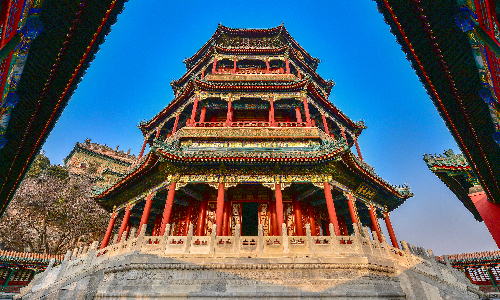
 Kunming
Kunming In the morning, we will first visit the Temple of Heaven, which was built in the 18th year of Yongle in the Ming Dynasty (1420). It is a place for emperors of the Ming (1368-1644) and Qing (1636-1912) Dynasties to pray for a good harvest. In the center of the Temple of Heaven, there is a circular stone slab called Tianxin Stone, which means heavenly center. Standing here, even if you speak quietly, you can be heard clearly. In addition, you can also feel the vitality of Beijing at the Temple of Heaven. The place has now become a place for Beijing residents to relax. You can hear someone playing the Erhu (a traditional Chinese musical instrument) and singing; you can see strong old men swinging their bodies while hanging the horizontal bar; you can learn several moves from locals who are practicing Tai Chi.
Next, we will go to Old Beijing Hutong. Hutong is an ancient urban alley unique to Beijing. Visiting hutongs is a good way to understand Beijing's traditional culture and customs. We will take a rickshaw, a traditional means of transportation in old Beijing, to visit the hutongs. On both sides of the hutongs are quaint Siheyuans (quadrangle courtyard). After the rickshaw tour, your guide will take you to visit a local family living in a Siheyuan. You can chat with the host, who may introduce to you the history of the house. Some people living in hutongs are descendants of imperial chefs, some are descendants of court guards, and some are descendants of officers in the Qing Dynasty. They all have a rich historical background and endless interesting stories. Anything you want to know about the customs of old Beijing can be answered here.
After lunch, you will take the estimated flight CZ6159 15:15/18:55 to Kunming. After arriving in Kunming, the local guide will take you to the hotel and check in.
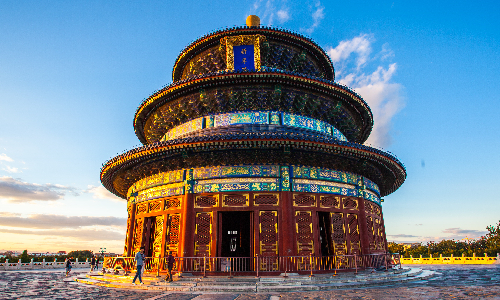
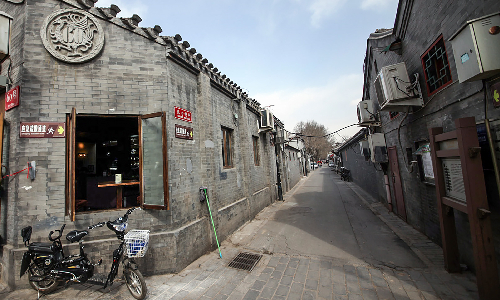
 Jianshui
Jianshui Yuanyang
Yuanyang After breakfast at the hotel, you will go to Jianshui. The whole journey from Kunming to Jianshui is about 170 kilometers, two hours by car. With a history of more than 1,200 years, Jianshui is a famous historical and cultural county that is south of Kunming. Jianshui has a collection of cultural relics and historical sites, and many attraction spots. In addition, Jianshui has countless delicious food, such as Jianshui roasted tofu. You can find roasted tofu stalls in any corner of Jianshui. You can see locals sitting around a barbecue stall chatting with each other, and eating the golden roasted tofu, which has a unique flavor and delicate taste.
First, we will go to Zhu Family Garden. It was the premier private garden of the Zhu family in the late Qing Dynasty in Yunnan Province. Upon entering the garden, you will first see three large flower halls (ancient drawing rooms). On the left and right sides are the embroidered halls where young ladies do the sewing and embroidery. In front of the flower halls is a garden, in which there are lotus ponds, bushes, nursery gardens, and flowerbeds, forming a typical southern private garden with local characteristics. Once the garden was the favorite place for the young men and young ladies of the Zhu family. They wrote and chanted poems, played instruments, and painted, free from worries.
Then we will go to visit the Confucius Temple. It was built in the Yuan Dynasty (1271-1368) and has a history of more than 700 years. There are many trees in the temple, like pines, cypresses, and willows. There are two symbiotic trees here, one is cypress and the other is banyan. After hundreds of years of growing, they have tightly intertwined each other. The most attractive place of the Confucius Temple is undoubtedly Dacheng Hall. It is the main building of the Confucius Temple. The yellow glazed tiles on the roof are beautiful. There are also many plaques and statues here. Most of the plaques are inscribed by emperors of previous dynasties, and the statues are celebrities who have made contributions to carrying forward Confucian culture.
If time is enough, you will have some free time in Jianshui.
Then we will drive south from Jianshui County to Yuanyang County. The whole journey is about 80 kilometers, and we will drive about two hours. Yuanyang County is located in the south of Yunnan Province, with about 127 square kilometers of rice terrace, which is a masterpiece left by the Hani people for generations. The mushroom-shaped houses of the Hani nationality are a local specialty in Yuanyang, and they usually are built on the mountain terrain. Besides, you can experience their life by strolling in the market, where you will see the most locals in a variety of minority costumes. In the evening, we will stay in Yuanyang.
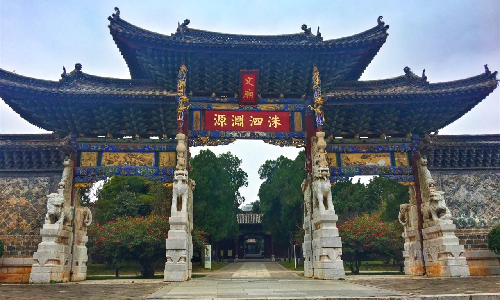
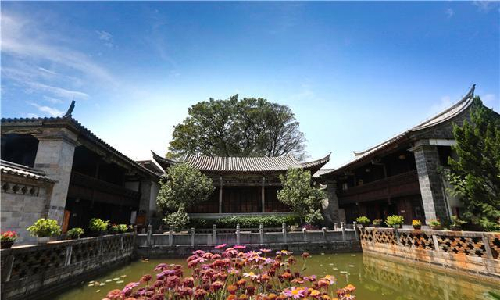
After breakfast, we will first visit Ethnic Village. Yuanyang is a place where ethnic minorities such as the Hani and Yi nationalities live together. Hani culture includes ecological culture marked by forest, farming culture marked by terraces, architectural culture marked by mushroom-shaped houses, and clothing culture marked by embroidery. The ethnic village we will visit is one of the few well-preserved original primitive villages at present. The roof is made of thatch and the wall is made of bricks, which is the main characteristic of the mushroom-shaped house, the traditional house of Hani nationality, very eye-catching and special. There is no trace of tourism atmosphere here. The adults are busy with farm work, while their children run and frolic. If you like chatting, they will not hesitate to introduce their life and history to you.
Next, we will visit Duoyishu Rice Terraces. It is more than 1,900 meters above sea level, with about 6.5 square kilometers of terraces. It is surrounded by hills on three sides and reaches into the valley on one side. The upper part of the terrace is relatively flat, while the lower part is steep. Viewed from above, it is like a huge waterfall pouring down, which is very spectacular. Duoyishu Rice Terraces are surrounded by clouds all year round, and the wonders of the sea of clouds are also quite amazing.
Then we will go to Beida Rice Terraces. From the Malizhai River at an altitude of 800 meters up the mountain, thousands of layers of terraces stretch continuously to the top of the mountain at an altitude of 2,000 meters, just like a ladder to the sky. The best viewing time of Bada Rice Terrace is when the sun is about to set and the sky is full of red clouds. Every time the sun sets, the sunset glows over the valley, and the sun radiates golden lights through the clouds. The color of the sky and the color of the terraces complement each other. The whole mountains are covered with a layer of golden glow, which is extremely beautiful.
The last stop today is Shengcun Market. The market day in Yuanyang is very unique. The date of market day in each village is different. The market day of Shengcun Village is calculated according to the ancient Chinese calendar. Market Day is not only a grand gathering of local people of all ethnic groups, but also the best time to enjoy the rich ethnic customs. You can see people coming to the market from all directions, wearing local ethnic clothes and headscarves, and carrying baskets. The clothes and headscarves of different nationalities have their own characteristics. The market sells all kinds of things, even including grasshoppers, silkworm pupae and other insects. There are also many snack stalls here, including roast tofu, roast meat, rice noodles, etc. You can taste local snacks in the market, sitting beside local people.
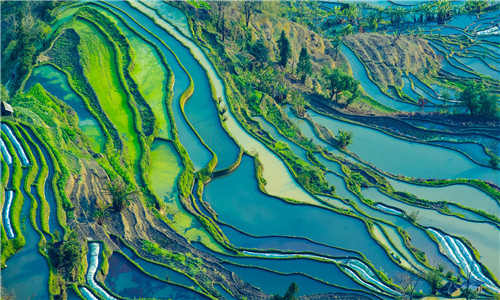
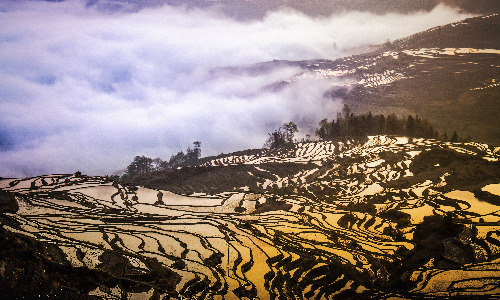
 Stone Forest
Stone Forest Kunming
Kunming After breakfast, we will drive northeast to Stone Forest. The whole journey is about 250 KM (3 hours and 20 minutes by car). How was the stone forest formed? According to experts, this place was an ocean more than 200 million years ago, with thick limestone deposits. Later, due to crustal movements, the area was lifted out of the sea. After geological evolution and erosion by surface water and groundwater for a long time, it finally became a stone forest. The stones may stand on open fields, or hide among the forests, or stand in lakes and rivers, with thousands of shapes, showing a wonderful picture of Stone Forest. The beauty of the Stone Forest is not only limited to the beauty of strange rocks, but also embodied in the combination with other karst landform components, like the underground rivers. You will be amazed here.
After lunch, we will drive west for about 70 minutes to Kunming, about 85 kilometers. We will stay at a hotel in Kunming this night.
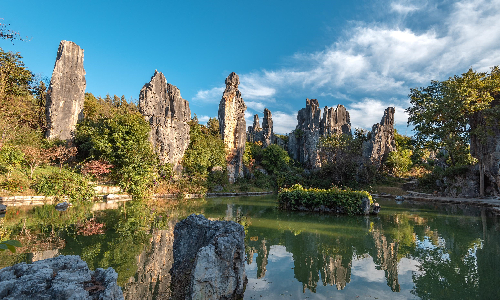
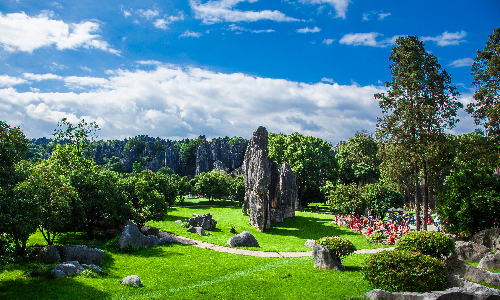
 Dali
Dali After breakfast, you will take the estimated train D8672 09:26/11:26 to Dali. The local guide will pick you up at the exit.
Your guide will first take you to have lunch. After lunch, we will visit Erhai Lake. Erhai Lake is a fault lake formed by crustal movement. It is also the second-largest plateau freshwater lake in Yunnan Province and is known as the "Plateau Pearl". We will take a cruise on Erhai Lake to enjoy the picturesque scenery of the lake. The cruise will travel along Cangshan Mountain, which is composed of 19 peaks from north to south, towering and majestic, in strong contrast to the beautiful scenery of Erhai Lake. During the cruise tour, you will feel like watching a high-definition movie. You can lean against the railing of the ship, feeling the wind, feeding the flying seagulls, and enjoying the scenery of the lake.
After visiting the lake, we will go to Xizhou Ancient Town, a famous historical and cultural town of Bai nationality with a history of 1000 years. Here you can immerse yourself in strong ethnic customs as well as historical and cultural atmosphere. When you first arrive in the town, you must be attracted by all kinds of old houses here. There are a large number of distinctive Bai residential buildings of the Ming and Qing Dynasties, as well as the Republic of China, which have high historical and cultural value. The colorful decorative art of carved beams, gate towers, and screen walls of these folk houses are gorgeous, making it solemn but lively and elegant. In addition to Bai folk houses, Posubaba is also a major feature of Xizhou Ancient Town. It is a kind of wheat flour pancake, with salty and sweet flavors. The outer skin is crisp and the inner stuffing is soft. It's worth a try.
Then, we will go to Three Pagodas and Chongsheng Temple. Chongsheng Temple was first built in the Nanzhao period (738-902), known as the "Buddha Capital". In front of Chongsheng Temple, the three pagodas are composed of one large and two small ones. The main pagoda of the three is called Qianxun Pagoda, which has 16 floors and is 69.13 meters high. There is a lifelike bronze Garuda at each corner of the pagoda. The height of the other two small pagodas is the same, with 10 floors each. There are three copper gourds on the top of each pagoda. The three pagodas of Chongsheng temple have not only experienced thousands of years of wind and rain but also experienced 30 strong earthquakes. Now they are still standing upright and have high historical, scientific, and artistic value.
The last destination today is Dali Old Town. Dali Old Town is located at the foot of the beautiful Cangshan Mountain. The ancient city of Dali has a history dating back to the Tang Dynasty (618-907). It was the political, economic and cultural centre of Yunnan for over 500 years during the Tang and Song(960-1279) Dynasties. In the old town, where the street goes, there is flowing water, which make the old town more beautiful. There is also a Catholic Church, which has a history of more than 90 years. Walking in the streets, you can see a golden cross on the top of an ancient building in the distance. The church looks like a temple-style building of the Bai nationality with carved beams and painted pillars inside and outside, all with a strong Bai architectural style. In addition to Bai-style carvings, you can also see traditional Han Chinese paintings, which is also the feature of this Catholic Church. It perfectly combines the characteristics of the Bai and Han nationalities, as well as the western architectural features, which make the buildings here very beautiful. Here you can also try Dali's special dishes, such as Fried Rice Wrapped by Chicken Wings, Bai’s Spicy and Sour Fish, Dali Casserole Fish and Papaya Chicken.
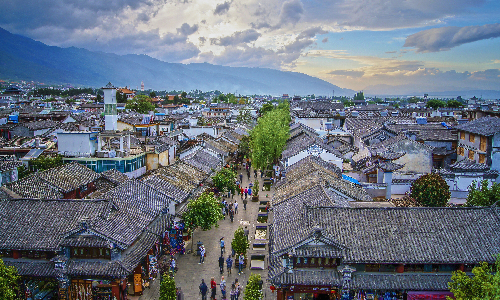
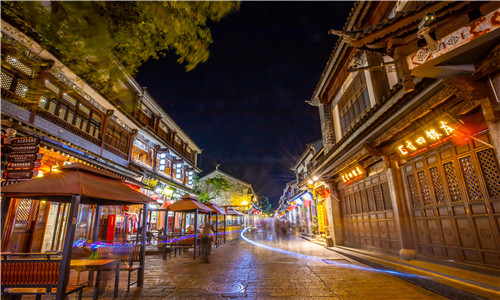
 Lijiang
Lijiang After breakfast, we will drive north about 180 kilometers (2 hours) to Lijiang. After arriving in Lijiang, we will visit Lijiang Ancient Town. Lijiang Ancient Town was built in the late Southern Song Dynasty (1127-1279), with a history of more than 800 years. It is the only ancient town without city walls among China's historical and cultural towns, with the surrounding mountains as its natural barrier. Walking into the ancient town, you will feel as if you were on a time shuttle and came to China hundreds of years ago. There are no tall buildings here, only small wooden buildings with two or three floors; the streets are not paved with asphalt and cement, but black bricks and stones; there is no traffic here, only groups of people are leisurely shopping, forming a serene picture.
In the center of the ancient town is Sifang Street. Sifang Street is paved with colored stones, surrounded by six stone streets that extend along the mountain. Do you know what colorful stone is? The streets and alleys of the ancient town are all paved with red breccia stones. After a rain, they will show colorful stripes, which locals call "colorful stones". Today, Sifang Street has become a famous snack street. There are dozens of small restaurants on both sides of the short narrow street, where you can eat many Yunnan specialties here, such as flower cakes. Yunnan is rich in flowers, which lets local people have a unique understanding and research on making dishes with flowers. Today's flower cake is no longer limited to rose cakes like before. Innovative technology and raw materials have made the variety of flower cakes richer and more diverse in taste. You can buy some of them for your friends and family as gifts.
Free Time Idea: At night, you can go to bars and have a drink. Lijiang's bars are well-known all over the world. There is a saying that if you haven’t been to a bar in Lijiang, you have not been to Lijiang. This shows the importance of bars to Lijiang. You can order a glass of drink, listen to the chants of folk singers quietly, or chat with strangers from all over the world. When night falls, and the lights are on, the long wooden tables are illuminated by candles, which contrasts with the floating wishing lanterns on the river. All these will be good memories.
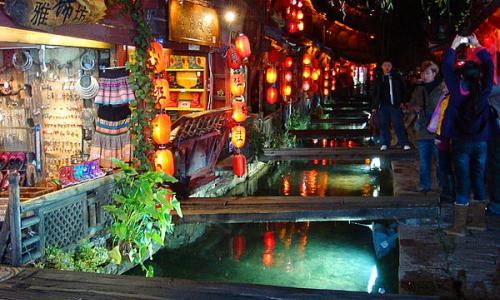
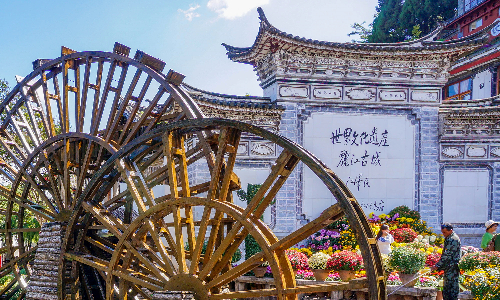
After breakfast, we visit Jade Dragon Snow Mountain. Jade Dragon Snow Mountain is composed of 13 snow peaks and surrounded by clouds and mist all year round, like a vigorous jade dragon, so it is called Jade Dragon Snow Mountain. As the sacred mountain for the Naxi people, Jade Dragon Snow Mountain is majestic, exquisite, and beautiful. It is rich in natural resources, and the landscapes can be roughly divided into snowy glacier landscapes, alpine meadow landscapes, virgin forest landscapes, snow mountain landscapes, etc. Many exotic flowers and plants are growing on the fertile land of the snow mountains. Yunnan’s eight most famous flowers (camellia, magnolia, lily, azalea, primrose, orchid, green velvet artemisia, gentian) all can be seen, among which there are more than 40 kinds of azaleas. When the season changes, azaleas blooming at different heights make up the most beautiful scenery of the mountain. Here is also the hometown of traditional Chinese herbal medicine, including Cordyceps Sinensis, snow lotus, poria cocos, and ephedra.
Here we will take the cable car to the Spruce Meadow on the mountain. When you are on the cable car, you can take pictures of snow-covered landscapes, which are breath-taking. Located at 3240 meters above sea level, the Spruce Meadow is a huge lawn hidden in the primitive spruce forest. Every spring and summer, there are green grass and blooming flowers. The Spruce Meadow is like a green carpet, which spreads on the mountain. Legend has it that there is a young man and woman died here together for love. Since then, people have believed that if young men and women die for love in the Spruce Meadow, their souls will enter the Jade Dragon Third Kingdom, which is the holy land admired by Naxi people for generations and the heaven on earth.
After descending the mountain, we will visit the Blue-Moon Valley. The Blue Moon Valley is named after the blue water of the lake here and the crescent-shaped valley. After the ice and snow of the snow-capped mountains are melt, the water flows down the cliffs, converging into mountain creeks and streams, and finally becomes a clear and blue river in the deep valley. The mud at the bottom of the lake is white. When it rains, the mud at the bottom of the lake will roll up and turn the water white, so it is also called the White Water River. Under bright sunshine, the jasper-like lake is shining like sapphires, making people feel as if they are in a fairyland.
After lunch, we will first visit Baisha Murals in Baisha Village. Known as a beautiful ancient village, Baisha Village was the earlist settlement of the Naxi people in Lijiang and the earliest political center of the Naxi people. During the Ming Dynasty (1368-1644), the chieftain family of Lijiang built palaces and invited painters of the Han, Tibetan, and Naxi nationalities to paint on the walls of these palaces. This paintings are the murals you will see. The Baisha Murals are unique in embracing different kinds of religious cultures and artistic genres. In addition to religious murals, you will also see murals depicting natural scenery such as running horses, blooming flowers, mountains, forests, birds, and insects. They are colorful and lifelike, and are well-preserved.
Then we will go to Shuhe Ancient Town. Surrounded by mountains and rivers, Shuhe Ancient Town is very quiet and quaint. Qinglong Bridge is a landmark in the ancient town. Built in the Wanli period (1573-1620) of the Ming Dynasty, it has a history of more than 400 years. It was listed as the most ancient stone bridge in Lijiang. After hundreds of years, the bridge floor has become mottled and old, but it does not lose its solemnity. In the center of the ancient town is Sifang Street, the central market of Shuhe Ancient Town. It is one of the oldest markets in Lijiang. In ancient times, there was a night market on Sifang Street of Shuhe. People wandered on Sifang Street like today's urbanites, walking and shopping leisurely. There are many shops along the street, some selling tea, some selling silver, and some selling hand drums, all of which are very worthwhile.
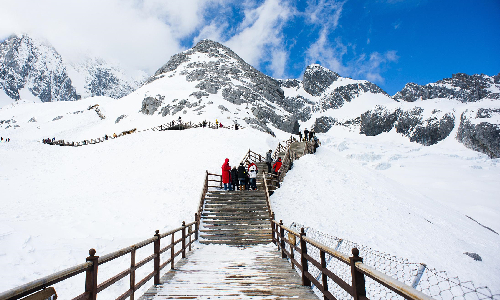
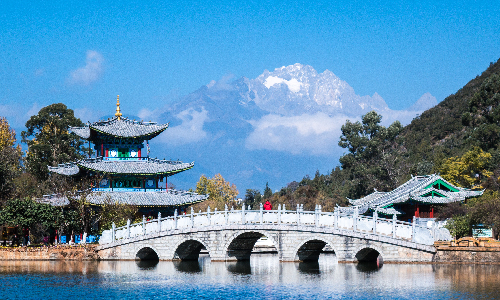
 Shangri-La
Shangri-La After breakfast, we will first visit the First Bend of Yangtze River. Located between Shigu Town in Lijiang City and Shasongbi Village in the southern part of Shangri-La County, it is 1,850 meters above sea level and more than 50 kilometers from downtown Lijiang, taking about 1 hour by car. How did the First Bend of the Yangtze River form? When the Yangtze River flows to Shigu Town from the northeast, it is blocked by a cliff, turns sharply to the north and forms a V-shaped bend. People call this wonder “the First Bend of the Yangtze River”. It has a wide river surface and calm water flows. There are villages on the bank, with smoke curling up from chimneys, forming a beautiful pastoral painting.
Our next destination is Tiger Leaping Gorge. Known as the "most beautiful gorge in China", Tiger Leaping Gorge is a gorge with the biggest altitude difference in the world. It is divided into three sections, the upper part, the middle part, and the lower part, and the total length is about 20 kilometers. Do you know the origin of the name Tiger Leaping Gorge? In ancient times, Lijiang was ruled by the Mu family. One day, the weather was very good and Mr. Mu (the ruler of the Mu family) was in a good mood, so he rode his mount, a tiger, and walked along the gorge. They arrived at a narrow section of the gorge. At this time, the tiger jumped and landed on the opposite bank of the river at the bottom of the gorge. But Master Mu was no longer on the tiger's back, he had already fallen into the river. The descendants of the Mu family named this gorge Tiger Leaping Gorge.
In the afternoon, we will drive northwest for about 2 hours(100KM) to Shangri-La. Then we will go to the hotel and your tour guide will help you check in. Please take a good rest and prepare for tomorrow's journey.
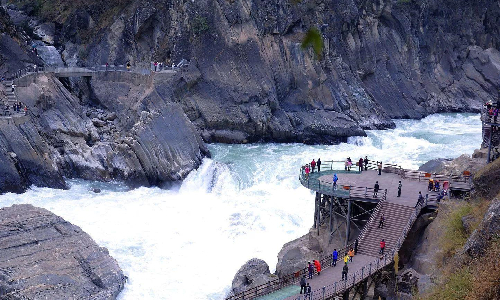
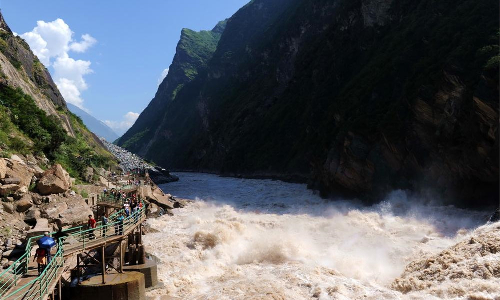
In the morning, we will visit Songzanlin Monastery. Built against a mountain, Songzanlin Monastery is the largest Tibetan Buddhist monastery in Yunnan Province, and it looks like an ancient castle. It is a masterpiece of Tibetan plastic art, and it is also known as the “Tibetan Art Museum”. After entering Songzanlin Monastery, you will climb the long steps to reach the main hall. The main hall is majestic and gorgeous. There are brightly colored and exquisite murals in the hall, which mainly describe historical stories and promote Buddhist teachings. You will also see many pillars in the main hall. According to statistics, there are a total of 116 pillars supporting the hall, and local people call them Auspicious Pillars. Here, you may understand the connotation of Tibetan Buddhist culture, and you can pray and take away the blessings of the Bodhisattva.
After lunch, we will first visit Pudacuo National Park. Pudacuo National Park is the first national park in mainland China, and the original ecological environment is well preserved. There are mirror-like lakes, pastures with abundant water, wetlands with blooming flowers, and primitive forests where birds and beasts coexist.
Next, we will come to Shudu Lake inside the park. "Shu" means cheese in Tibetan, and "du" means stone. In ancient times, according to the Tibetans, the harder the cheese is, the better. Legend has it that, a monk wandered along the lake, and a herdsman thought the monk was begging alms so gave him some cheese. When the monk found that the cheese was very solid, like a stone, he was overjoyed and prayed, “May the cheese produced here always be as solid as a stone.” This lake is so named also expresses that the herdsmen’s wish. The lake is surrounded by mountains and forests, and there are wooden plank roads for walking in the forests. In spring and summer, flocks of cattle and sheep gather by the lake, and the beautiful singing of shepherds makes people deeply feel the pleasure and leisure of plateau people.
At last, we will visit a local Tibetan family. When you come to a Tibetan family, the host waiting at the door will offer you a Hada, which is a long silk scarf used by the Tibetan people to show respect and congratulations. To show your gratitude, you can put your palms together and say “Zha Xi De Le”(which means good luck, the greeting most used by Tibetans in daily life). After entering the hall, you can visit their houses and taste the special snacks prepared by the host. Hospitable Tibetans will sing and dance to show their welcome. You can join them and have fun together.
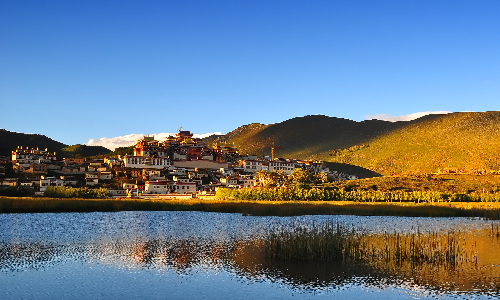
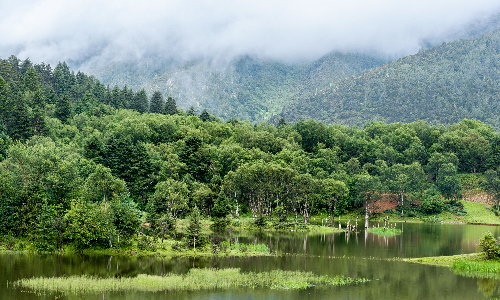
 Shanghai
Shanghai After breakfast, we will visit Dukezong Ancient Town. With a history of more than 1,300 years, Dukezong Ancient Town houses the best-preserved and largest Tibetan residential group in China. The most distinctive feature of the ancient town is its white wall. On a moonlit night, the silver moonlight makes the ancient walls charming. Therefore, the locals call the ancient town "Dukezong", which means white stone town in Tibetan. The roads here are winding and rugged, and today, we can still see deep horse hoof prints on the stone road, which are the footprints left by horses one thousand years ago. Every building here has the unique style of the Tibetan area. Most of the houses here are made of bricks and wood, with small wooden windows on the outer walls and prayer flags on the roof. In the ancient town, there is the world's largest and heaviest prayer cylinder, 21 meters high and 60 tons in total weight, which has been recorded in the Guinness World Records. Only when more than ten people work together, can it rotate, which is very spectacular.
After lunch, you will take the estimated flight MU7891 15:55/21:55 to Shanghai. After arriving in Shanghai, your guide will take you to the hotel to have a rest.
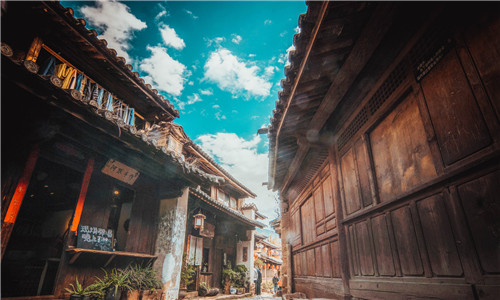
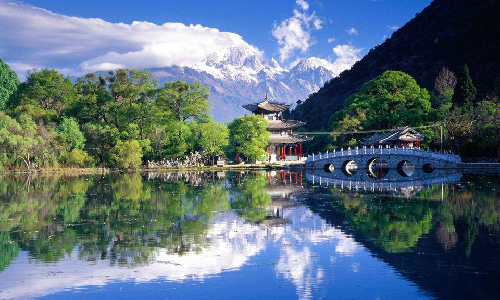
Say goodbye to China! Your private guide will take you to the airport according to your schedule, and our service ends here. We hope this trip will bring you good memories and look forward to our next cooperation.
Free Time Suggestion: There is no arranged tour today. If your departure flight is in the late afternoon, and you would like to explore Shanghai by yourself, I recommend the Bund and Nanjing Road for you. The Bund and Nanjing Road are next to each other. You can have some shopping in Nanjing Road and stroll on the Bund then. Please note that, you should check out before you explore the city. You can temporarily store your luggage at the hotel.
Editor: Wang Qian
Proofreader: Summer Hou
| City | Five Star hotel list | Four Star hotel list |
|---|---|---|
| Beijing | Sunworld Dynasty Hotel Beijing Wangfujing | Sunworld Hotel Wangfujing |
| Kunming | Grand Park Kunming | UChoice Hotel |
| Dali | The One Hotels & Resorts | Landscape Hotel |
| Lijiang | Wonderport International Hotel | Lijiang Wangfu Hotel |
| Shangri-La | Paradise Hotel | Ri Yue Xing Cheng Hotel |
| Yuanyang | Oness Resort Yuanyang Terrace | Oness Resort Yuanyang Terrace |
| Shanghai | Ocean Hotel Shanghai | Courtyard by Marriott Shanghai Central |
 |
![]() About your child or infant, please contact us for a discounted price.
About your child or infant, please contact us for a discounted price.



We started with a few days in Beijing & ended in Shanghai, from where we visited the Forbidden City and Great Wall. In between we visited Terra Cotta Warriors Museum, Panda Base, Shanghai Disneyland.

We had a wonderful holiday in China which will remain long in the memory. China is a breathtakingly beautiful country full of splendid temples and palaces, mountains and rivers, peaceful rural scenes and bustling shopping streets.
 QUICK ENQUIRY
QUICK ENQUIRY